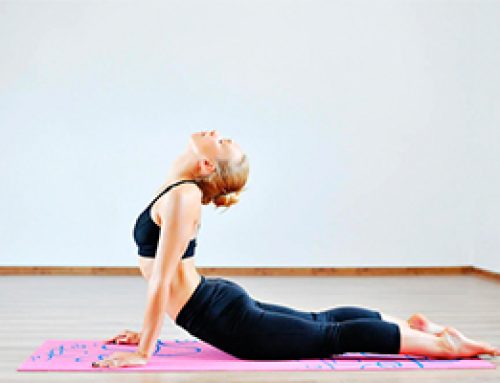A sauna is a small room created for relaxation sessions through wet or dry heat therapy. For the most part, saunas made for the outdoors function in the same manner as indoor saunas.
Saunas placed outside, as well as the indoor version, both create steam by using a heat source, sauna stones, and water. Infrared saunas that give off dry heat are available for outdoor use but are more commonly seen indoors.
The frame and interior of saunas designed for the outdoors use special materials, covered later in this guide, for dealing with weather and temperature changes. Here are a few other factors that set them apart from one another:
Most indoor saunas come in a standard box, or cubical, shape. Saunas for the backyard have a variety of shapes available.
Venting is easier to complete in outside saunas, but installation is sometimes complicated. You must follow local codes while building a sauna outside the home. (wiring, chimney, etc.)
Saunas made for inside the home are usually more compact in size than outdoor ones.
THE ORIGIN OF THE OUTDOOR SAUNA
While the exact date of when sauna use started is unknown, scientists believe that it began around 2,000 B.C. in the northern Europe region.
The very first saunas were not actual buildings like the saunas of today. They were caves that were man-made and covered using animal skins to close them off. Here are a few facts about the first saunas used outside:
Because of their long-lasting heat and smoke sterilization, these rooms also helped with everyday life and survival.
The saunas of yesterday often served more than one purpose, even used as hospitals for birthing children.
They sometimes served as homes, the only space warm enough to live during the extremely cold winter months.
Their healing and therapeutic benefits led to them becoming traditional holy grounds. Some cultures believed in sauna spirits. Some still believe that saunas have magical properties.
Ancient saunas were also used for:
Washrooms, Kitchens, Burial grounds, and Celebrations.
5 TIPS FOR OUTDOOR SAUNAS
Check for Regulations
Lots of people think that if they own their home and the surrounding land that goes with it, they’re free to do whatever they want with that space.
In fact, there are a variety of organizations that can and often do set rules regarding what, how, and where you can build on your own land. Home owners’ associations, for one, might regulate where you can add additional structures, what they can look like, and to what extent they can be viewed from outside your home.
State or local building codes, too, may have something to say about your outdoor-sauna addition. In particular, you probably need a building permit if you’re going the permanent-structure route (as opposed to portable) since that’s typically considered “new construction.” There may also be taxes associated with this type of addition.
In extreme cases, failure to comply with these kinds of codes can result in the forced removal of the new structure, so it’s well worth your while to cover your bases before you start.
Assuming you’re good to go, the next tip: When it comes to space constraints, be realistic.
Determine the Available Space
A sauna can turn a good sweat into a great party, and you’ll find outdoor models that can fit eight, 10 or even 12 people comfortably. Unfortunately, the party sauna may not fit in that unused corner of your yard
You may be tempted to go as big as you can afford, but a sauna that monopolizes your entire outdoor space will seriously limit your options for future additions, may turn off prospective home buyers if you eventually want to sell, and will probably look pretty odd.
A good approach is to go with the largest sauna you can afford among the models that will fit easily in the available space. Even a small yard can accommodate a multi-person sauna — a 5×7-foot structure can fit three or four bathers comfortably. You’ll just need to pare down the guest list.
Consider Its Use
Do you plan to invite neighbors to share your sauna, or is this just for your own use? Is it mostly intended to increase your home value, or will you take it with you if you move? Do you plan on cold-weather use?
Put some real thought into how you plan to use your sauna and what its main purpose is because these considerations will determine your sauna’s ideal size, type, add-ons, and structural configurations. For instance, you can install sauna-friendly entertainment centers if you plan to play host. If you hope to take it with you to your next home, you can look into a portable model. For use in colder climates, an attached changing room and maybe even an enclosed pathway between home and sauna can be invaluable assets that dramatically increase how often your sauna gets used.
Compare the Heating Options
The wood stove and rocks that characterize traditional Finnish saunas are still around, and lots of people refuse to give up the rustic sauna experience. Wood burning is only one way to heat a sauna, though, and the more modern methods are the ones in the widest use today.
Besides the wood stove, your primary choices are:
- Electric — Kind of like a very heavy-duty space heater, this is one of the cheaper options. Extra safety measures may be required due to the presence of electricity and water in the environment.
- Gas — The type of approach used in natural-gas home heating and another wallet-friendly option. Fluctuating gas prices can affect costs in the long run.
- Infrared — A whole new way to sauna, infrared light waves target the bodies in the room, heating them directly instead of heating the air. A more expensive way to go.
There’s no right choice here. The heat source is a matter of preference and logistics. Be aware, though, that a gas heater requires a gas line running to the sauna, and if that means installing one from scratch, you’re looking at a significant increase in cost.
Finally, don’t overlook the importance of the controls.
Feel the Heat!
Sauna temperatures typically start around 80 degrees Fahrenheit and go all the way to a scorching 125 Fahrenheit.
Check the Controls
Heating methods aren’t the only way saunas have changed with the times. We’re a long way from stoking flames and pouring water on stacks of rocks (if we want to be, that is).
Sauna controls can be programmed to start the heating process (which typically takes at least 30 minutes) on a timer so you walk into a perfectly heated room. Some offer settings for energy efficiency and have presets to store different user’s temperature preferences. The remote control can eliminate the need to ever leave the bench, steam can be automated, aromatherapy scents injected, and auxiliary inputs utilized for music and lighting technology you already own.
There’s one feature, though, that needs to be included in whichever controls you choose: auto-off. The heat source must be told to turn itself off after a preset period of time so a user who falls asleep in there doesn’t get hurt.
Luckily for the purists, even a traditional-style sauna can be equipped with modern safety controls. Surely even the Finns didn’t care for heatstroke.
For more information on outdoor saunas and their indoor counterparts, check out the links on the next page.
SAUNA SIZES
The backyard sauna is not “one size fits all.” There are various sizes available for energy and space efficiency. Here is more information on each of the sizes available:
1-Person Traditional Sauna: The smallest option. Perfect for enjoying your de-stressing and rejuvenating sessions alone. If you plan to relax solo, this is the best option.
2-Person Traditional Sauna: Works if you plan to bring a companion along. Whether spouse, a close friend or loved one, two people can fit comfortably.
4-Person Traditional Sauna: If you plan to bring your family along for the fun, or a few close associates, opt for this option.
6-Person Barrel Sauna: Perfect for small therapeutic gatherings.
8-Person Traditional Sauna: The largest option. Ideal for hosting a large number of guests.
Being cramped up is the last way to reach pure bliss. You want to be sure that you have enough room so that all guests can unwind comfortably.





Leave A Comment